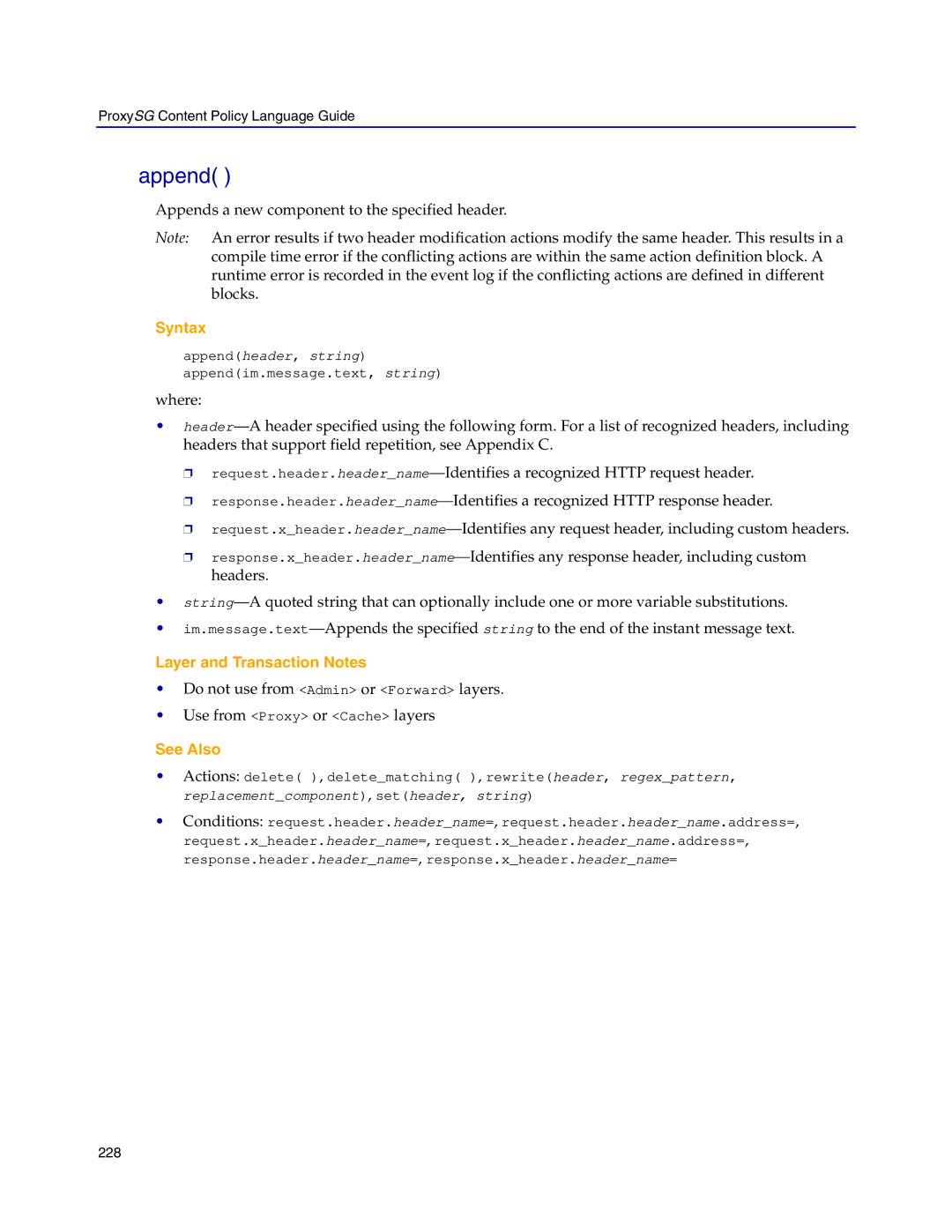ProxySG Content Policy Language Guide
append( )
Appends a new component to the specified header.
Note: An error results if two header modification actions modify the same header. This results in a compile time error if the conflicting actions are within the same action definition block. A runtime error is recorded in the event log if the conflicting actions are defined in different blocks.
Syntax
append(header, string) append(im.message.text, string)
where:
•
❐
❐
❐
❐
•
•
Layer and Transaction Notes
•Do not use from <Admin> or <Forward> layers.
•Use from <Proxy> or <Cache> layers
See Also
•Actions: delete( ), delete_matching( ), rewrite(header, regex_pattern, replacement_component), set(header, string)
•Conditions: request.header.header_name=, request.header.header_name.address=, request.x_header.header_name=, request.x_header.header_name.address=, response.header.header_name=, response.x_header.header_name=
228
